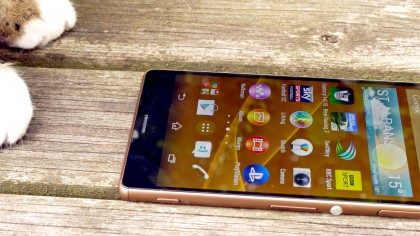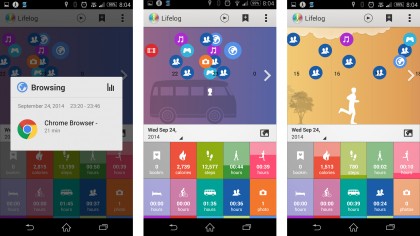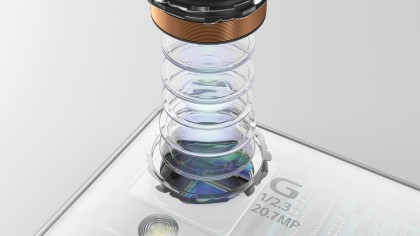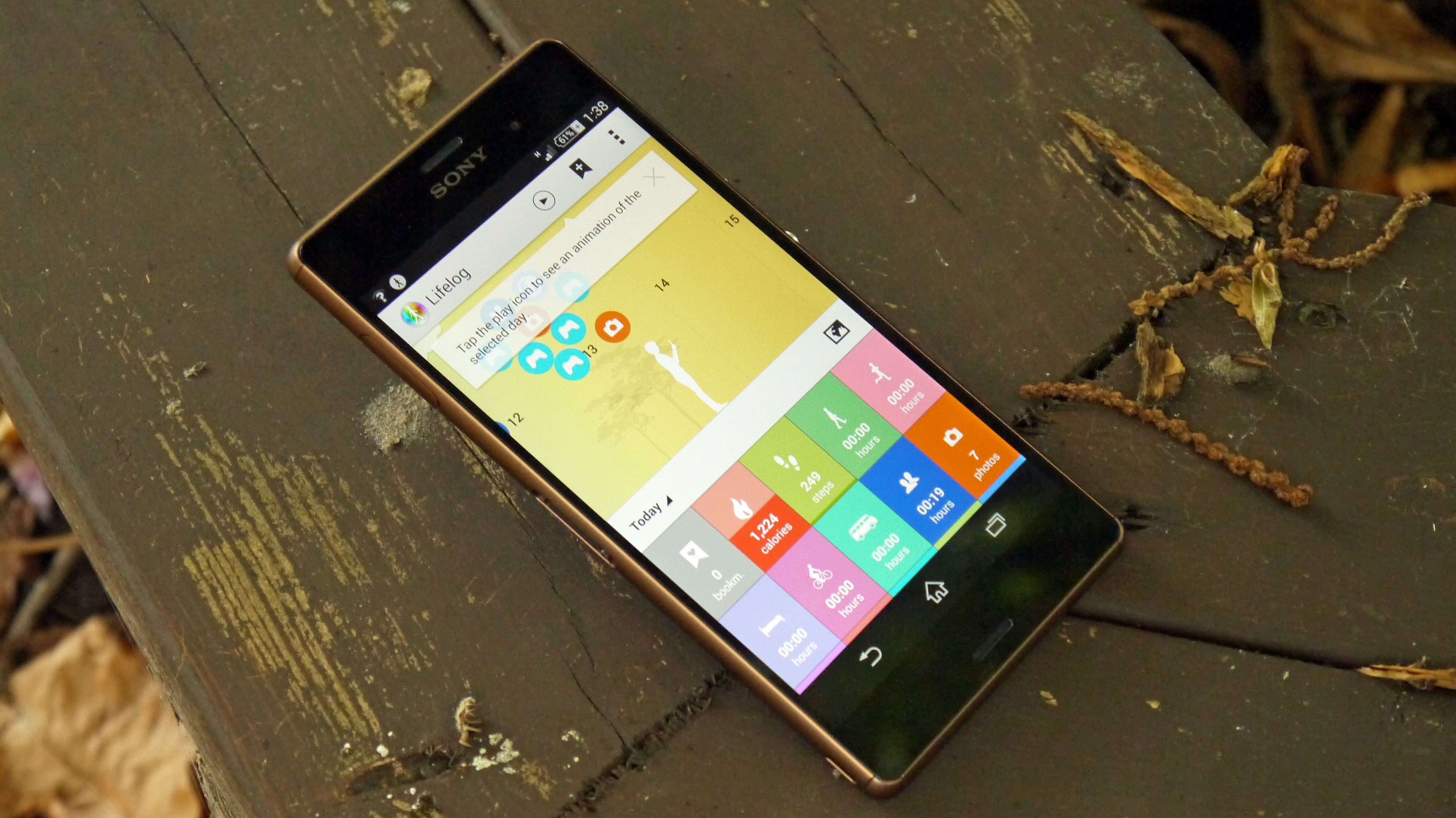Why you can trust TechRadar
It's hard to define key features for a phone that's been mercilessly refined over the last two years, as most of the inherently good things about it have been there for a while.
However, Sony has made some important tweaks that it's worth talking about, so let's take a look and see if the new changes really warrant you buying the new phone - or, if you're into Sony but don't want to spend all that money, whether you could get away with buying the still-new Xperia Z2 for a whole heap less cash.
Loves the water, craves the dust
The big claim Sony is making here is that the Xperia Z3 is one of the most waterproof and dust resistant phones on the market. It's IP65 / IP68 rated, which means it can not only spend longer underwater (two metres for 60 minutes) but also is better able to withstand jets of water flung at it.
And there's that IP6X dust rating too, which has been added for a while to let you throw the phone into all manner of dusty environments and not have those pesky granules invade the phone's innards.
Does it add a lot to the Sony Xperia Z3? Not really, unless you're one of the very niche who do like to run around all day in the lower depths of plunge pools, or have invested in an industrial power shower and want to watch videos in there at the same time.
However, being IP68 rated does add something clever to the Sony Xperia Z3: it makes it into more of a rival to the likes of the Cat Phone, which is touting itself as an antidote to the modern fragility of smartphones. The downside is the Cat option is a much poorer phone, which means that Sony can now offer not only a more robust device but one that works well too.

Stuff the Z3 in a rugged case for the weekend and you've got the smartphone that won't crack, break or fall apart just because you fancy a spelunk.
Lifelogging
Lifelogging is an interesting feature on the Xperia Z3. It's taking the boring steps counter (which we've seen on the likes of the Samsung Galaxy S5) and adding in some very clever extra tricks.
Open up the app (which annoyingly has a notification at the top of the phone at all times to let you know it's logging - the more OCD among us will appreciate the irritation of not being able to dismiss this) and you'll be able to see not only how many steps, but how many hours walking, running, commuting, cycling, sleeping and more.
The phone is most people's primary music device, so it can tell how long you spend listening to tunes daily, and if it's your main way of consuming video, it can tell you how many hours that's taken too.
Even the calorie counter is more accurate as it not only adds in exercise from movement, but also your background burn, so you can see how much that cake is really going to affect your weight.

Combine that with a clever interface that's easy to understand, and the ability to bookmark your day at certain points like a digital diary, and Sony is well on the way to nailing a proper life tracker.
However, the current version still isn't good enough. Put on certain battery modes to save juice and it stops working. While it's amazing that the app can work out when you're cycling or commuting, it's not accurate enough, only picking up my morning journeys on occasion.
And the fact it sees all apps as games means that it looks like I play all the time, when in reality I'd much rather it was able to tell me how much time I spend on BBC Sport rather than 'loads of gaming in the day'.
Lifelog also really needs the Core Smartband to really work as well, to track those moments when you play football and don't have the phone, or offer proper sleep tracking, as the phone can't do that at the moment.
There's a really annoying niggle within it in that if it can't refresh the data on the server side, it won't show any activity for recent hours or days. This means you can go for a run and see nothing, thinking it's not tracked, but leave it five minutes and suddenly see it appear.
Also Lifelog will only tell you that you've listened to a couple of minutes of Spotify a day, even if it was the soundtrack to a massive run. If the data's not correct, it renders the whole system slightly moot.
This system will get better with time, and it's better than 90% of other options out there already - I just hope Sony keeps refining it quickly enough to make it really awesome.
Therein lies the problem with all 'lifelogging' apps and smartbands – what's the point? Sony's Lifelog can tell you what you've done, but doesn't analyse that data. It doesn't give you helpful hints over how to improve things beyond 'achieving' targets for the day.
Until these life gamifying systems give an actual victory (for instance, this app could tell you the optimum time in your day for a run based on your performance) there's very little point in them beyond curiosity.
Snap up
One of the big things Sony is always crowing about is the fact it's got into bed with the cameras division and made this all singing sensor for smartphones.
Yes, it's 20.7MP, and yes, it's got Exmor RS technology with the G Lens, but to most people that doesn't answer the question of whether it's any good.
You'd think it would have to be, given that it's got so many fancy Sony brands in play, but while outdoor bright shots can look brilliant (and often do) this is something we say about many high end phones. The Samsung Galaxy S5 and LG G3 both offer a similar experience and, along with the iPhone 6 Plus, they beat the previous Sony Xperia phones hands down in low light.
So Sony has upped its game here and added in a wider G Lens and boosted the ISO settings to 12800 in order to improve the low light performance of the phone.
The wider shots certainly do add something to your photos (both figuratively and literally) although unless you test side by side with an older Sony phone you won't necessarily notice the difference.

But rest assured: it does give better snaps with more elements in, which are great for group shots or wider landscapes.
The lower-light performance seems to be working too - however, there's a slight confusion Sony's created here. Arguably the best thing its camera app offers is intelligent auto mode, which can work out the best image for the scene you're trying to take and alter the settings accordingly.
In a world where the iPhone is the most popular camera, the need to offer a really powerful yet simple point and shoot experience has never been greater, so it's good to see Sony making the jump.
However, get to lower-light situations and the camera understandably goes into Low Light mode. This results in a very, very slow shutter speed and kind of negates the low light performance as most shots will come out blurry unless you're taking pictures of still life.
It also limits to 8MP (not a real problem, but the advertised 20.7MP seems a bit pointless) and isn't - by far - the best smartphone snapper on the market.
That said, if you are willing to sit and compose a decent low light shot, the results are more than satisfactory, as you'll see in the camera comparison later on.
Brighter screen
I'm a big fan of decent screen technology, and the fact that Sony has made something that's arguably among the best excites me a lot. The main trick here is that the 5.2-inch display is brighter than ever before, perhaps more than anything on the market, with 600 nits of brightness compared to the 400 from the older model.
This means that if you're outside, you're always going to get a clearer and easier to read display, with pictures fired up and more visible.

Combine this with Sony's already decent IPS screen with Live Colour LEDs (which are mostly a marketing gimmick in name, but do boost the colours and viewing angles to take what was a poor display on the Z1 (with a very washed out screen) and make it into something you'd really want to spend time watching video on.
The brightness won't make much of a difference day to day, but what it does do is make you constantly feel like you're looking at a really clear and clean screen - improving on the Full HD resolution already on offer.

Gareth has been part of the consumer technology world in a career spanning three decades. He started life as a staff writer on the fledgling TechRadar, and has grew with the site (primarily as phones, tablets and wearables editor) until becoming Global Editor in Chief in 2018. Gareth has written over 4,000 articles for TechRadar, has contributed expert insight to a number of other publications, chaired panels on zeitgeist technologies, presented at the Gadget Show Live as well as representing the brand on TV and radio for multiple channels including Sky, BBC, ITV and Al-Jazeera. Passionate about fitness, he can bore anyone rigid about stress management, sleep tracking, heart rate variance as well as bemoaning something about the latest iPhone, Galaxy or OLED TV.
